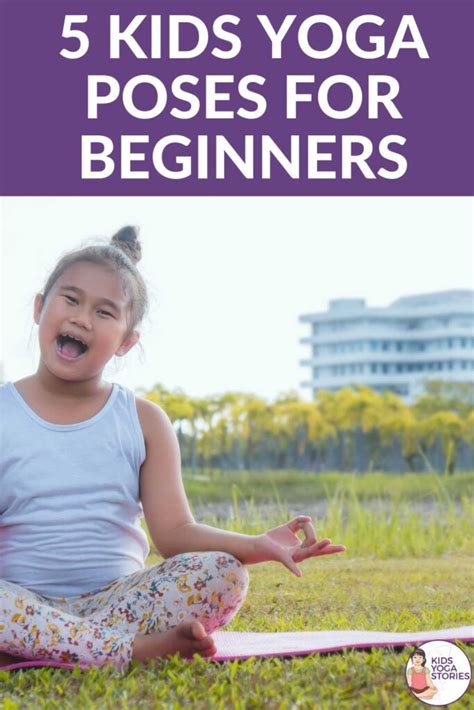Creative Yoga Poses for Kids: Fun and Engaging Ways to Get Active
Yoga is a fantastic activity for children, combining movement, mindfulness, and fun. It helps kids develop flexibility, balance, and strength while fostering a sense of calm and focus. Unlike more traditional forms of exercise, yoga offers a playful and imaginative way for children to engage both their bodies and minds. Whether in the classroom, at home, or in a yoga studio, children can benefit greatly from practicing yoga.
In this guide, we’ll explore five fun yoga poses that kids can enjoy, each offering unique physical and mental benefits. These poses not only keep children active but also encourage creativity and self-expression. Along with the poses, we’ll discuss the benefits of introducing yoga at an early age and how to ensure children maintain a safe and effective practice.
Key Concepts: Why Yoga for Kids?
Children today face various stressors, from schoolwork to social pressures, and yoga offers a way to manage this stress constructively. The benefits of yoga for kids include:
- Physical fitness: Yoga builds strength, flexibility, and coordination.
- Emotional regulation: Yoga teaches kids how to manage emotions and stay calm.
- Focus and concentration: Breathing exercises and poses enhance attention spans.
- Self-expression: Through playful movements, kids can express their creativity.
These benefits make yoga an excellent addition to any child’s routine, helping them grow physically, mentally, and emotionally.
Historical Context: Yoga for Children
Yoga has its roots in ancient India, and while it has traditionally been practiced by adults, more recently, it’s been adapted for children. Historically, yoga was a disciplined, meditative practice designed to promote spiritual growth. However, as yoga gained popularity in the Western world, it evolved into a more accessible and playful form suitable for kids.
In the 1970s and 1980s, yoga for children began to gain momentum, with schools and parents recognizing its physical and mental health benefits. Educational systems worldwide have since integrated yoga into curricula, offering children a tool to manage stress and enhance overall well-being.
Current State Analysis: The Popularity of Yoga for Kids
In recent years, the popularity of yoga among children has soared. Parents and educators alike are using yoga as a way to promote mindfulness, physical activity, and emotional resilience. Yoga classes for kids are now common in schools, community centers, and even online, offering easy access to this beneficial practice. The accessibility of child-friendly yoga resources, such as apps and videos, has made it simpler than ever to introduce yoga into children’s daily routines.
Practical Applications: 5 Fun Yoga Poses for Kids
1. Tree Pose (Vrksasana)
Tree Pose is a simple yet effective pose that helps kids improve balance and concentration. It mimics the shape of a tree, making it a playful and engaging pose for young children.
How to do it: Stand on one foot, with the sole of the other foot pressed against the inner thigh or calf. Bring the hands together at the chest or raise them overhead like tree branches. Hold the pose for a few seconds, then switch sides.
Benefits: Strengthens leg muscles, improves balance, and fosters focus.
2. Cat-Cow Pose (Marjaryasana-Bitilasana)
Kids love this combination of poses because it involves mimicking animals. It’s a great way to stretch the spine and warm up the body.
How to do it: Start on all fours. Inhale and arch the back (Cow Pose), lifting the head and tailbone. Exhale and round the back (Cat Pose), tucking the chin and pulling the belly button toward the spine.
Benefits: Stretches the back, neck, and torso while improving flexibility and coordination.
3. Downward Dog Pose (Adho Mukha Svanasana)
A well-known yoga pose, Downward Dog, resembles a dog stretching its body. This pose helps kids engage their core and build upper body strength.
How to do it: Start on all fours, tuck the toes, and lift the hips toward the ceiling, creating an upside-down “V” shape with the body. Keep the hands and feet on the floor and encourage kids to imagine being playful puppies.
Benefits: Strengthens arms and legs, stretches the hamstrings, and energizes the body.
4. Cobra Pose (Bhujangasana)
Kids often enjoy Cobra Pose because they can pretend to be snakes! It’s an excellent way to stretch the chest and spine while encouraging deep breathing.
How to do it: Lie face-down on the mat, with palms placed flat under the shoulders. Gently press into the hands to lift the chest, keeping the elbows bent and the legs on the floor. Encourage kids to “hiss” like snakes as they rise into the pose.
Benefits: Stretches the chest and abdomen, improves posture, and strengthens the spine.
5. Child’s Pose (Balasana)
This is a calming and restful pose, perfect for children who need a break or want to wind down after a yoga session. Child’s Pose encourages deep breathing and relaxation.
How to do it: Sit on the heels with knees apart. Fold the body forward, resting the forehead on the mat, and extend the arms in front or place them by the sides. Encourage children to imagine they’re curling up like a quiet, restful animal.
Benefits: Promotes relaxation, stretches the back, and calms the mind.
Case Studies: Yoga in Schools
Schools that have implemented yoga programs for children have reported positive results. For example, one elementary school in California integrated a yoga program for students during recess. The program led to noticeable improvements in students’ behavior, with teachers reporting a calmer and more focused classroom environment.
In another case, a school in the United Kingdom introduced yoga as part of the physical education curriculum. Over the course of the school year, students demonstrated improved flexibility, strength, and emotional regulation.
| School Name | Yoga Program Focus | Outcome |
|---|---|---|
| California Elementary | Recess Yoga | Improved behavior, enhanced focus |
| UK Primary School | PE Curriculum Yoga | Increased flexibility, emotional regulation |
Stakeholder Analysis: Who Benefits from Yoga for Kids?
Yoga for kids offers benefits to multiple stakeholders:
- Parents: See improvements in their children’s physical health and emotional well-being.
- Schools: Experience a more focused and calm classroom environment.
- Yoga instructors: Can expand their teaching expertise to a younger audience, reaching more students.
- Healthcare providers: May recommend yoga as part of a holistic approach to managing stress and improving physical health in children.
Implementation Guidelines: Tips for Teaching Yoga to Kids
To successfully introduce yoga to children, follow these key guidelines:
- Keep it fun: Incorporate imaginative play and storytelling into poses to maintain engagement.
- Use simple language: Avoid technical yoga terms unless necessary, and explain the movements in an age-appropriate way.
- Encourage exploration: Let children modify poses and express themselves through movement.
- Ensure safety: Teach kids the importance of listening to their bodies and not forcing any pose.
Ethical Considerations: Ensuring Inclusivity in Yoga for Kids
It’s important to ensure that yoga classes for children are inclusive and accessible to all. This means creating a welcoming environment for kids of all abilities, backgrounds, and learning styles. Additionally, instructors should avoid enforcing rigid standards for performance and instead encourage children to practice at their own pace.
Limitations and Future Research
While yoga for kids shows immense potential in promoting physical and mental well-being, more research is needed to quantify long-term benefits. Additionally, not all children may engage with yoga in the same way, and individual differences in attention span, interest, and physical ability should be considered when designing programs. Future studies could explore the impact of yoga on children’s academic performance, social skills, and overall mental health.
Expert Commentary
Yoga experts and pediatric specialists agree that introducing yoga at an early age can have lasting benefits. It offers a balanced way for children to engage in physical activity while also promoting mindfulness and stress relief. By making yoga fun and accessible, parents and educators can help children develop healthy habits that extend into adulthood.








